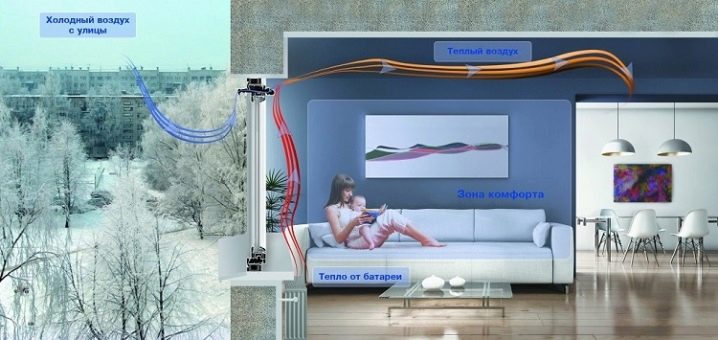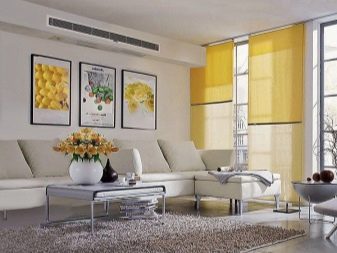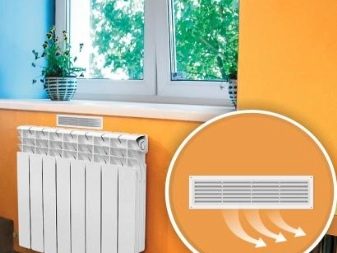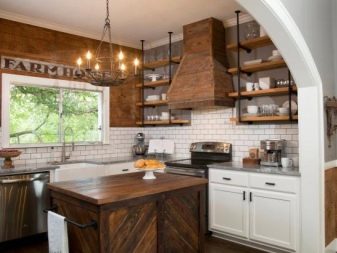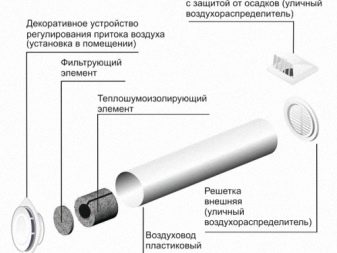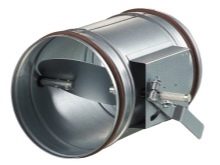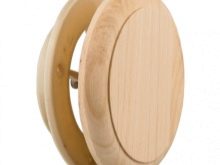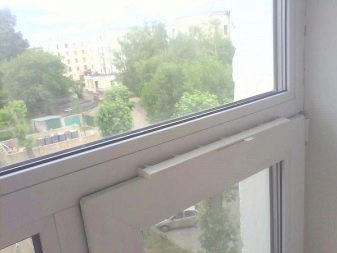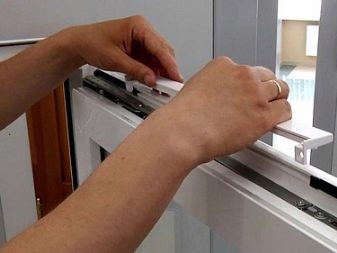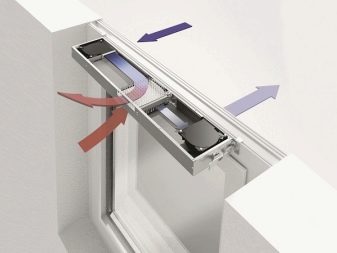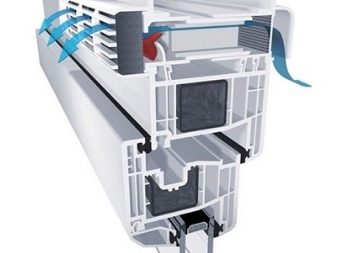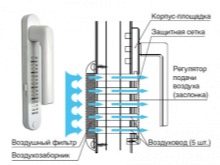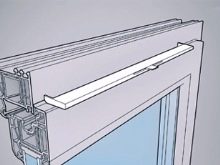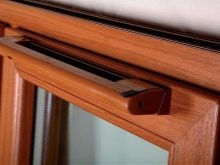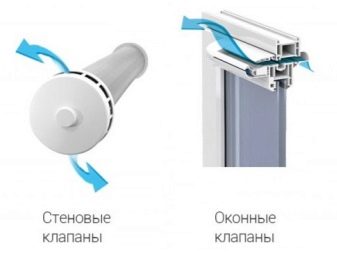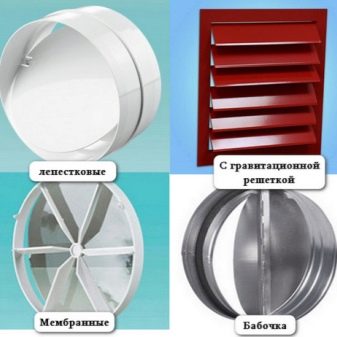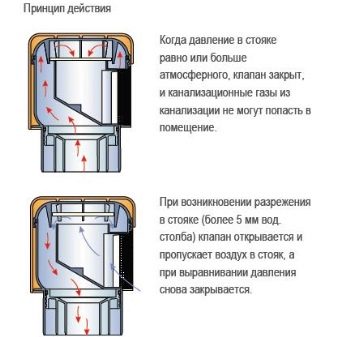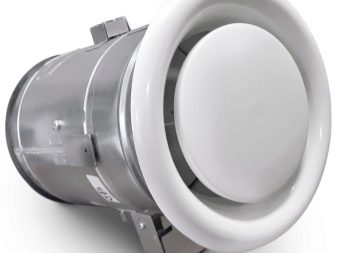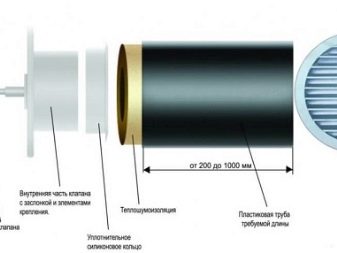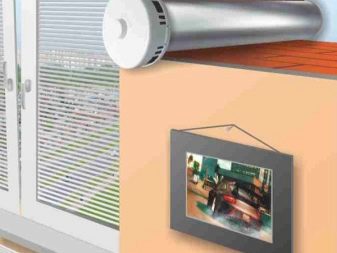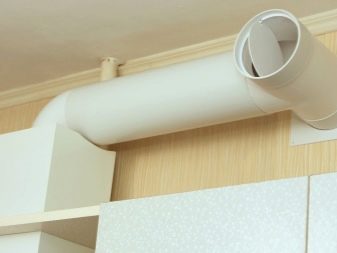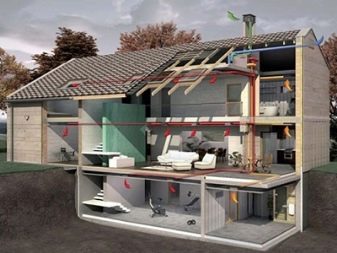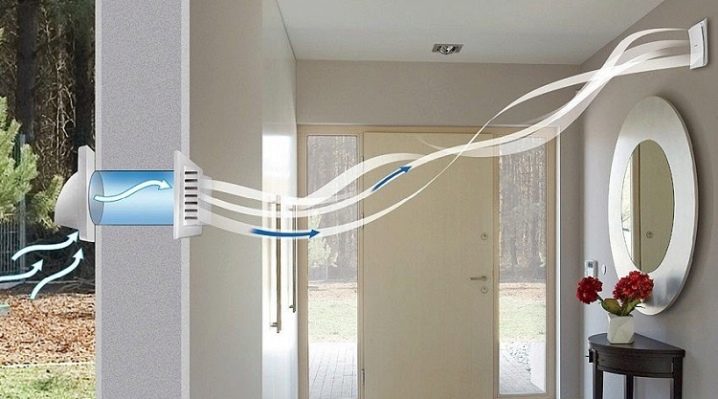Ventilation valve: functions and operating principle

All people living in apartment buildings, sooner or later face the problems of ventilation. If condensation forms on the walls and glass, dampness is felt, you need to add the supply and exhaust elements to the ventilation system. To do this, in the walls, window frames are installed ventilation valves.
These are simple stand-alone devices that will supply you with clean air even with hermetically closed doors and windows.
What is needed?
The ventilating valve belongs to elements of additional ventilation. It is necessary for unbalanced operation of the ventilation system.It provides a small influx of fresh and exhaust air from the apartment. If the ventilation system is supplemented with plastic ventilation valves, the following objectives can be achieved:
- increase oxygen supply;
- improve air circulation;
- maintain the balance of incoming and outgoing air volumes;
- provide noise isolation of premises from the street.
Kinds
Ventilation valves are divided into supply, exhaust and supply and exhaust. There are 2 main types of inlet valves: window and wall. Wall devices are heat and sound insulated cylinder mounted in the wall.
On the outside of the cylinder there is a grill with a mosquito and mosquito net., and inside - the control valve. The method of controlling the air flow - manual or automatic, depending on the model. Automatic devices operate in response to changes in pollution, humidity, air pressure.
Wall ventilation valves are most often mounted in the kitchen, especially if there is no exhaust system above the stove where food is cooked. Periodic opening of the vents will not save the apartment from the dominance of kitchen odors, especially if the ventilation system knocks over.Constantly open windows are also not an option, because a cold air flow enters the house, and even all the noises from the street can be heard much more clearly. Special filters are built into the wall devices to clean the incoming air. The greatest capacity of such devices is 60–72 cubic meters. m / h
The wall models of inlet valves have the following disadvantages:
- installation complexity;
- the need for frequent cleaning of installed filters;
- the possibility of freezing in severe frosts;
- high price.
Often, wall valves are installed above the heating system - this provides additional heating of the incoming air flow.
Wall valve devices are of the following varieties:
- throttle valves consist of a metal pipe of circular or square cross section and a damper with the ability to control its movement;
- disc valves can be installed both in the walls and on the ceiling of the room;
- The three-way valve is designed to control the temperature of the passing air
- The solenoid valve is characterized in that the opening and closing of the valve is carried out by an electric actuator.
Window valves inlet ventilation are, in simple terms, slots in a hermetic window with dampers. They are distinguished by simplicity of design and automatic operation all day long. The power of such a device is small - only 3–7 cu. m / h Window inlet valves can be embedded in a frame of almost any material - from wood, aluminum, plastic. Location - the upper parts of the windows. For adequate operation of the device requires compliance with such conditions as:
- natural exhaust must be in the room where the window valve is installed;
- the temperature of the outdoor air should not be more than +5 degrees;
- the door from the door must close tightly;
- free air circulation between the rooms of the apartment.
The main advantages of the window inlet valves are the following:
- stealth;
- easy installation;
- insulation;
- the flow of incoming air is directed upwards;
- affordability.
Important! Automatic valves are equipped with a device that reacts to the level of humidity in the room.
The disadvantages of window models are the following:
- work only with a good exhaust system;
- low productivity;
- no filters;
- cold outside air in the winter;
- risk of freezing of the device.
Window valves are classified into 3 types.
- Slotted. Air is supplied through a slit, the dimensions of which are as follows: width - from 14 to 17 cm, height - from 1.2 to 1.6 cm. Outside this hole is covered by an intake unit. It protects the valve from insects, dirt, litter and precipitation. Indoors, the gap is covered by a regulating unit. The slotted devices are mounted in the highest part of the frames or in the horizontal profile separating the frame parts. The advantages of this type are good throughput and ease of installation.
- Seam. They are used when plastic frames are already mounted. They are cheap and easy to install. Fresh air is supplied through small narrow holes in the vestibule. Advantages - ease of installation and preservation of noise insulation. The disadvantage is the small amount of air passed through the slots, because of this the seam valves are not suitable for large rooms.
- Overhead. The largest amount of air passes through these valves, but they must be provided before installing window frames; they cannot be put on already mounted plastic or aluminum windows.
Window devices usually have several modes of operation.Adjustment can be carried out both manually and be automated. For manual adjustment in some models the lace is adapted as on blinds, in others - a manual regulator. Automatic adjustment of the valve is always more expensive, but it's worth it. To do this, the valve provides sensors for humidity and / or air pressure inside and outside the room.
Exhaust ventilation valve is designed to exhaust the outside air.
In addition, it protects the premises from the penetration of insects, fluff and litter. It has a simpler structure when compared with the inlet valve, namely:
- the stationary part (lattice) prevents mechanical damage to the movable part;
- movable damper that opens only in one direction;
- flange for attachment to the ventchanal.
The exhaust valve requires careful installation to prevent damage to the valve and ingress into the construction debris. Otherwise the device will not work correctly. Therefore, after installation, be sure to check the operation of the device. Reversible valves are mounted strictly vertically, duplicating the main exhaust system.Hermetic ventilation valves are essentially a locking device that is installed in exhaust ducts. It blocks the flow of air.
There are also such types of valves as check valves. In a situation where the so-called backward thrust appears in the apartments, that is, smells from the neighbors' apartments come to you, the installation of a check valve is appropriate.
It is usually installed in the ventilation duct. It can function both in the system of natural ventilation and artificial injection / extraction. There are devices with a round or square cross section.
Check valves are divided into several types.
- Membrane household. It is used in conjunction with exhaust fans with electric low power. Light flexible flap opens with air flow. When the motion vector of air is reversed, the damper presses and the passage closes.
- Petal. The valve is rigid, attached to the axle. The opening and closing of the valve by turning it.
- Butterfly. In the valve pipe mounted 2 valves on the springs. The opening of the channel occurs under the action of air flow, and closing - a spring mechanism.Included is a fan of sufficient performance.
- Gravitational. The flaps swing open under the pressure of the air stream, and close under their own weight.
The exhaust system and check valve must be installed together. The choice of the type of check valve depends on the mode of operation of the ventilation hood. If regular use of this system is planned, the valve type is not important. With irregular functioning of the exhaust system, the damper should be the easiest, so that the natural flow of air can open it up. "Butterflies" are installed in industrial buildings, the power of household fans is not enough to plow their doors.
For the installation of gravity valves fit only two positions - vertical and horizontal. Their design does not provide tightness. Other types of check valves can function at any location. Maintaining the valve in the closed state is forced - under the action of a spring mechanism or a system of counterweights. The device must be carefully tuned - an improperly adjusted system requires more fan power,and as a result of additional costs of electricity. And the noise level will increase.
Scope of application
Additional ventilation devices can be installed anywhere: in an apartment, in a private house, on walls, windows, even on the floor or roof of a dwelling. Naturally, suitable valve models are provided for each installation location.
Selection criteria
In order to determine the type of device, it is necessary to understand what problems the installed ventilation system has, whether to increase the flow of fresh air or to help the exhaust part of the system. Next, choose whether you need a stand-alone or electrical valve. Aesthetics also plays an important role in the selection of a suitable device. And also calculate your financial capabilities. Wall valves are more powerful window, but the price they have the corresponding. But the installation of window valves is much easier than the wall.
The most effective type of intake system is considered to be a structure with a forced element of the inflow of air masses. The components of such a device are as follows:
- electric fan;
- filters for cleaning the air flow;
- heating elements.
Such devices have the following advantages:
- ability to work independently of the general ventilation system;
- additional air cleaning;
- moisture content control.
Important! However, the high price of the device and its installation, as well as the additional cost of electricity are quite significant disadvantages.
How to set your own hands?
Worth adhere to the following installation rules for wall inlets:
- before you start installing additional ventilation valves, determine the places of their installation, consult the scheme of the ventilation system installed in your house, it is better that this scheme is made by experts;
- Next, determine the wall thickness and buy a suitable construction for the length;
- Drill a hole with a diameter reserve in the place specified for the device installation;
- after you install the inlet pipe, fill all the gaps with foam for tightness;
- then the external lattice is mounted, and the device itself is assembled inside, according to the instructions from the manufacturer;
- install a visor over the grill to prevent precipitation from entering the interior of the structure.
Usually exhaust ventilation devices are mounted in domestic premises - kitchen, bathroom, toilet rooms. The entire installation procedure consists of connecting the valves to the existing ventilation channels. Usually the connection takes place with the help of flanges. After installing the valve, the outer grille is attached.
Tips masters
Wall models recommend laying in the construction of walls, but it is also possible to install them in ready-made rooms. Window valves are not advised to install themselves - it is easy to break the tightness of window frames and lose warranty service from the manufacturer. But the main thing is to choose the type of additional ventilation you need. Unsuccessfully selected models are capable of clogging the natural ventilation system of the premises, overturning it, or creating uncomfortable conditions with additional noise of the operating fan.
In the next video you will find the installation of the ventilation valve.
